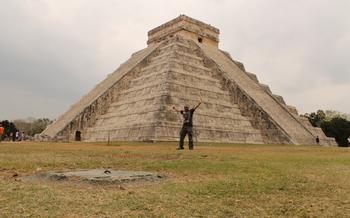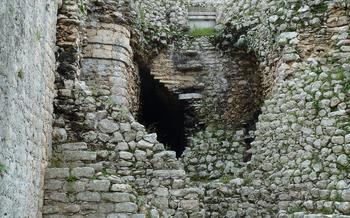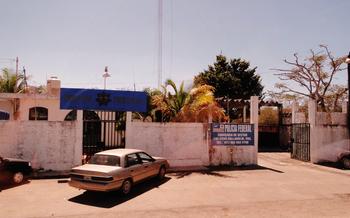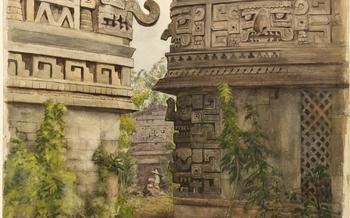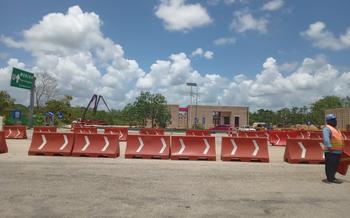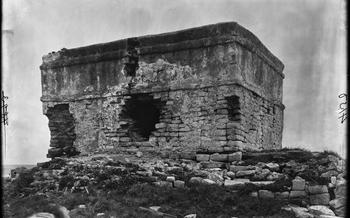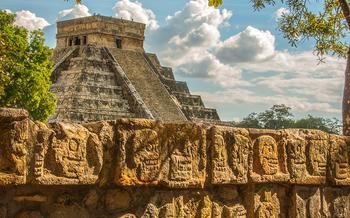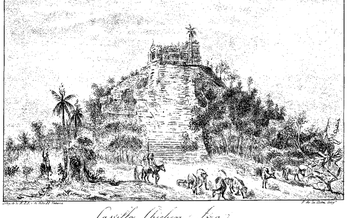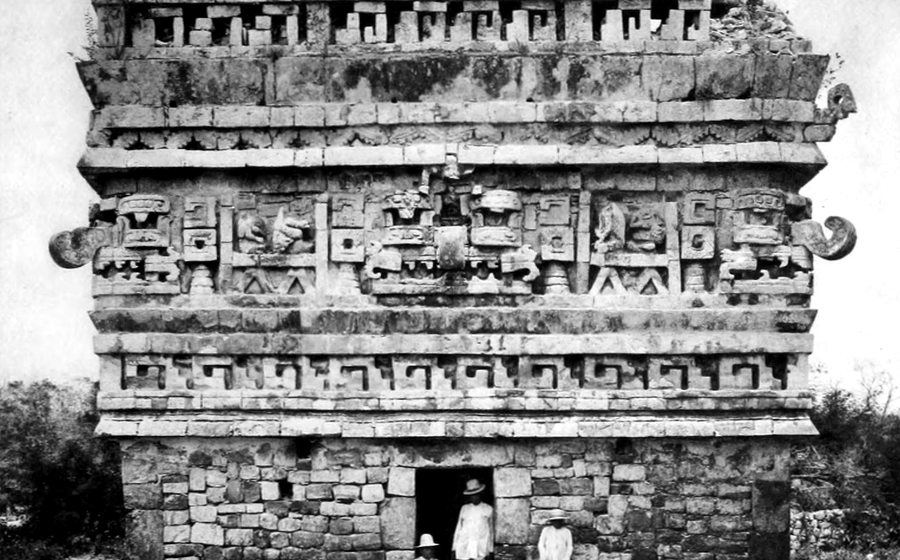
La Iglesia
- Historical Significance
- La Iglesia: A Sacred Temple Dedicated to the Maya Rain God
- Visiting La Iglesia
- Architectural Features
- Interior Decorations
- Religious Significance
- Restoration Efforts
- Excavations and Discoveries
- Symbolism and Alignments
- Maya Rituals and Ceremonies:
- Tourism and Sustainability
- Local Culture and Traditions
- Nearby Attractions:
- Photography Tips:
- Insider Tip:
Historical Significance
Explore the ancient Maya city of Chichen Itza, a UNESCO World Heritage Site, and delve into the fascinating history of the Maya civilization. Learn about their rise and fall, their cultural legacy, and the unique architectural features of Chichen Itza, including the stepped pyramids and intricate carvings. Understand the importance of Chichen Itza as a center of pilgrimage and commerce in the Maya world, and discover the secrets of this ancient city that once thrived in the heart of the Yucatan Peninsula.
La Iglesia: A Sacred Temple Dedicated to the Maya Rain God
Within the sprawling complex of Chichen Itza lies a smaller yet significant temple known as La Iglesia, Spanish for "The Church." This compact yet intricately adorned structure is a testament to the architectural prowess and religious devotion of the ancient Maya. Its unique features set it apart from the other buildings in the city, making it a must-visit attraction for anyone exploring the wonders of Chichen Itza.
La Iglesia boasts several distinctive architectural elements that showcase the ingenuity of the Maya builders. Its stepped pyramid design, with its ascending tiers, creates a sense of awe and grandeur. The use of corbelled arches, a technique involving the gradual overlapping of stones to create a vaulted ceiling, demonstrates the Maya's mastery of construction techniques.
The interior of La Iglesia is as captivating as its exterior. The walls are adorned with well-preserved murals and sculptures, offering a glimpse into the religious beliefs and practices of the ancient Maya. These intricate decorations depict Maya deities, rulers, and mythological scenes, providing valuable insights into the Maya worldview and their relationship with the divine.
La Iglesia's religious significance is deeply intertwined with the Maya rain god Chaac. As the deity responsible for bringing life-giving rain to the parched Yucatan Peninsula, Chaac was revered and worshipped by the Maya. La Iglesia served as a sacred temple where rituals and ceremonies were performed to honor Chaac and ensure a successful harvest. Offerings, prayers, and dances filled the air as the Maya sought to appease the rain god and secure his blessings for their agricultural endeavors.
Visiting La Iglesia
Visiting La Iglesia, a small but significant temple within the Chichen Itza complex, offers a unique and immersive experience for travelers. The best time to visit is during the shoulder seasons (April-May and September-October) when the weather is pleasant and the crowds are smaller. The entrance fee to Chichen Itza includes access to La Iglesia, and guided tours are available to provide insights into the history and significance of the site.
When exploring La Iglesia, remember to wear comfortable shoes as the terrain can be uneven. Bring water and sunscreen to stay hydrated and protected under the hot Mexican sun. Combining a visit to La Iglesia with other attractions in the Chichen Itza complex, such as the Great Ball Court and the Temple of Kukulcan, allows for a comprehensive exploration of this ancient Maya city.
During my visit to La Iglesia, I was captivated by the intricate carvings and well-preserved murals that adorned the interior of the temple. The atmosphere was serene and spiritual, transporting me back in time to the days when the Maya people worshipped their gods and performed sacred rituals within these hallowed walls.
Architectural Features
The architectural features of La Iglesia showcase the ingenuity and craftsmanship of the ancient Maya builders. The temple is constructed on a stepped pyramid base, a common feature in Maya architecture that symbolizes the ascent to the heavens. The pyramid's exterior is adorned with intricate carvings and sculptures, depicting deities, rulers, and scenes from Maya mythology.
The most striking feature of La Iglesia is its corbelled arch, a remarkable engineering feat that allowed the Maya to create wide spans without the use of true arches. The arch is formed by overlapping layers of stone, each course projecting slightly inward until they meet at the apex. This technique allowed the Maya to create large, open spaces within the temple, facilitating religious ceremonies and rituals.
The symbolism associated with La Iglesia's architectural elements is also significant. The number of steps on the pyramid, the alignments of the structure with celestial bodies, and the iconography depicted in the carvings all carry deep meaning and reflect Maya beliefs and practices.
By comparing the architectural features of La Iglesia with those of other Maya structures, such as the Temple of Kukulcan, we can gain a deeper understanding of the evolution of Maya architecture and the cultural significance of these ancient buildings.
Interior Decorations
The interior of La Iglesia is adorned with intricate decorations that offer a glimpse into the artistic and religious expressions of the ancient Maya. The walls are adorned with well-preserved murals depicting various scenes and figures from Maya mythology. These murals showcase the vibrant colors and detailed brushwork characteristic of Maya art. The murals often depict scenes of rituals, ceremonies, and offerings to the rain god Chaac, emphasizing the sacred nature of the temple.
In addition to the murals, La Iglesia features numerous sculptures and carvings that further enhance its visual appeal. These sculptures include representations of Maya deities, rulers, and mythological creatures. The sculptures are often intricately carved with great attention to detail, showcasing the skill and craftsmanship of the Maya artisans.
The interior decorations of La Iglesia provide valuable insights into the religious beliefs and practices of the ancient Maya. The murals and sculptures served as visual representations of their deities, myths, and rituals, helping to create a sacred and immersive atmosphere within the temple. By studying these decorations, we can gain a deeper understanding of the complex religious world of the Maya and their devotion to their gods.
Religious Significance
La Iglesia held a profound religious significance for the ancient Maya as a temple dedicated to Chaac, the rain god. Chaac was a pivotal figure in the Maya pantheon, responsible for bringing life-giving rains essential for agriculture and the survival of the Maya civilization. The temple served as a sacred space where the Maya performed rituals and ceremonies to honor Chaac and seek his favor. Offerings were made, prayers were recited, and elaborate dances were performed to appease the rain god and ensure a successful harvest. The temple's location within the city of Chichen Itza further emphasized its importance, as it was situated near the city's agricultural fields and played a crucial role in the Maya agricultural cycle.
Restoration Efforts
La Iglesia has undergone extensive restoration efforts in recent years, aimed at preserving and protecting this ancient structure for future generations. Archaeologists and conservators have faced numerous challenges in this process, including the need to balance the preservation of the original fabric of the building with the need to ensure its structural stability.
One of the key challenges has been the removal of vegetation and root systems that have grown into the structure over time. These plants can cause significant damage to the stonework and undermine the stability of the building. Conservators have carefully removed these plants without causing further harm to the structure.
Another challenge has been the repair of the stonework itself. Many of the stones have been damaged by erosion, weathering, and human activity. Conservators have used a variety of techniques to repair and reinforce the stonework, including grouting, patching, and consolidation.
The restoration efforts have also involved the reconstruction of missing or damaged architectural elements, such as the corbelled arches and the roof. These elements have been carefully recreated using traditional techniques and materials, ensuring that the restored structure remains faithful to the original design.
The ongoing restoration efforts at La Iglesia are a testament to the importance of preserving Maya cultural heritage. By protecting and restoring this ancient structure, we can ensure that future generations can continue to appreciate and learn from this remarkable example of Maya architecture and engineering.
Excavations and Discoveries
Archaeological excavations at La Iglesia have revealed a wealth of significant discoveries that have shed light on the history, culture, and religious practices of the ancient Maya. Among the most notable findings are well-preserved murals and sculptures that depict Maya deities, rulers, and mythological scenes. These artworks provide valuable insights into Maya beliefs, iconography, and artistic traditions.
Excavations have also uncovered evidence of ritual offerings and burials within the temple, further illuminating the religious significance of La Iglesia. Ceramic vessels, jade ornaments, and other artifacts have been found, offering clues about the rituals and ceremonies that were performed in the temple.
Ongoing research and investigations at La Iglesia continue to yield new discoveries and insights. Archaeologists are studying the architectural features, iconography, and artifacts found at the site to gain a deeper understanding of Maya culture and the role of La Iglesia in the ancient Maya world.
Symbolism and Alignments
The architectural features and interior decorations of La Iglesia hold profound symbolic meanings that reflect Maya cosmology and beliefs. The stepped pyramid design represents the Maya's understanding of the three realms of existence: the underworld, the earthly world, and the celestial realm. The corbelled arch, a distinctive feature of Maya architecture, symbolizes the passage between these realms.
The interior decorations of La Iglesia are adorned with intricate murals and sculptures that depict Maya deities, rulers, and mythological scenes. These decorations hold significant symbolic meaning, conveying messages about the Maya's beliefs about creation, the afterlife, and the cyclical nature of time.
The structure of La Iglesia is also aligned with astronomical events. The building's orientation and the placement of its windows and doorways allow sunlight to penetrate the interior at specific times of the year, such as during the solstices and equinoxes. These alignments demonstrate the Maya's advanced understanding of astronomy and their ability to track the movements of the sun and stars.
The symbolism and alignments of La Iglesia offer a glimpse into the complex and sophisticated belief system of the ancient Maya. By understanding these symbolic and astronomical elements, visitors can gain a deeper appreciation for the cultural and intellectual achievements of this remarkable civilization.
Maya Rituals and Ceremonies:
La Iglesia played a crucial role in the religious ceremonies and rituals of the Maya people. It served as a sacred space where priests and shamans performed various rituals to honor the Maya rain god Chaac and ensure a bountiful harvest. One of the most significant rituals performed in La Iglesia was the Chaac rain ceremony. During this ceremony, priests would offer prayers, incense, and other offerings to Chaac, asking for rain and a successful agricultural season. The ceremony also involved ritual dances, music, and the burning of copal incense to invoke Chaac's favor. Through these rituals, the Maya sought to maintain a harmonious relationship with the divine and secure the well-being of their community.
Tourism and Sustainability
Chichen Itza is a popular tourist destination, and La Iglesia is one of its most iconic landmarks. However, the increasing number of visitors has put a strain on the ancient structure and the surrounding environment. To address these challenges, efforts are being made to promote sustainable tourism practices at Chichen Itza.
The authorities have implemented measures to limit the number of visitors allowed into the site each day. They have also established designated trails and walkways to minimize damage to the fragile ruins. Visitors are encouraged to stay on these paths and avoid touching or climbing on the structures.
In addition, there are ongoing efforts to educate visitors about the importance of preserving Maya cultural heritage. Interpretive signs and guided tours provide information about the history, culture, and religious significance of La Iglesia and Chichen Itza.
Visitors can contribute to sustainable tourism by following the guidelines and regulations set forth by the authorities. They can also support local businesses that are committed to sustainable practices, such as restaurants and hotels that use local ingredients and employ local staff.
By working together, visitors and authorities can ensure that La Iglesia and Chichen Itza are preserved for future generations while also providing opportunities for people to learn about and appreciate the rich cultural heritage of the Maya civilization.
Local Culture and Traditions
The area surrounding Chichen Itza is home to a vibrant Maya community that has preserved and celebrated its cultural heritage for centuries. Visitors to La Iglesia and Chichen Itza have the opportunity to immerse themselves in this rich culture and learn about the traditions, crafts, music, dance, and cuisine of the Maya people.
One of the best ways to experience Maya culture is to visit local markets and artesanía shops, where you can find a variety of handmade crafts, including woven textiles, pottery, and wood carvings. These markets are also a great place to sample traditional Maya cuisine, such as freshly made tortillas, tamales, and cochinita pibil, a slow-roasted pork dish.
For a more in-depth cultural experience, consider attending a traditional Maya ceremony or festival. These events are often held in local villages and offer a glimpse into the spiritual and religious beliefs of the Maya people. You may also have the opportunity to participate in traditional Maya dances, which are often performed during festivals and celebrations.
To truly connect with the local community, take the time to interact with the Maya people and learn about their way of life. Visit their homes, chat with them in their native language, and ask questions about their traditions and beliefs. The Maya people are known for their hospitality and are always willing to share their culture with visitors.
Nearby Attractions:
In addition to exploring La Iglesia and the other attractions within the Chichen Itza complex, there are several nearby attractions that visitors can explore to further immerse themselves in the history and culture of the Maya civilization.
One popular destination is the Ik Kil Cenote, a stunning natural swimming hole located just a few kilometers from Chichen Itza. This cenote, with its crystal-clear waters and lush vegetation, offers a refreshing respite from the hot Yucatan sun and a chance to experience the natural beauty of the region.
Another nearby attraction is the Ek Balam archaeological site, which is home to a well-preserved acropolis, a ball court, and a series of impressive sculptures and carvings. Visitors can climb to the top of the acropolis for panoramic views of the surrounding jungle and learn about the history and culture of the ancient Maya city.
For those interested in exploring the underground world of the Maya, the Rio Secreto Nature Reserve offers a unique opportunity to swim, snorkel, and float through a series of underground rivers and caves. Visitors can admire the stunning stalactites and stalagmites, as well as learn about the importance of water in Maya culture.
These nearby attractions, each with its own unique features and highlights, offer visitors the chance to further explore the rich history and culture of the Maya civilization and create lasting memories of their time in this fascinating region.
Photography Tips:
Capturing the beauty and grandeur of La Iglesia and the surrounding area through photography is a rewarding experience. Here are some tips to help you take stunning shots:
-
Golden Hour Magic: Aim to visit La Iglesia during the golden hours, just after sunrise or before sunset, when the warm light casts a magical glow on the ancient structures.
-
Composition is Key: Experiment with different angles and perspectives to create visually appealing compositions. Shoot from a low angle to emphasize the height of the pyramid, or capture the intricate details of the carvings up close.
-
Embrace Natural Light: Take advantage of the natural light to illuminate the intricate details of La Iglesia. Position yourself so that the sun is behind you, avoiding harsh shadows and capturing the soft, diffused light that brings out the textures and colors of the stone.
-
Tripod for Stability: Bring a tripod to ensure stability and avoid camera shake, especially when shooting in low-light conditions or using a telephoto lens. This will help you achieve sharp and crisp images.
-
Experiment with Different Lenses: Depending on your photographic style and preferences, consider bringing a wide-angle lens to capture the vastness of the site or a telephoto lens for close-up shots of the intricate carvings and details.
-
Capture the Essence: Beyond technical aspects, take the time to truly immerse yourself in the atmosphere of La Iglesia. Look for unique angles, shadows, and patterns that convey the essence and story of this ancient place.
Insider Tip:
For a unique perspective of La Iglesia, venture to the lesser-visited Cenote Sagrado, located just a short walk from the main archaeological site. This natural sinkhole holds a deep pool of water and is surrounded by lush vegetation, creating a serene and mystical atmosphere. Descend the stone steps to the water's edge and admire the reflection of La Iglesia's pyramid rising above the cenote. It's an ideal spot for capturing breathtaking photographs and experiencing the tranquility of this sacred place.
